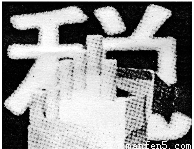题目内容
Few laws are so effective that you can see results just days after they take effect.But in the nine days since the federal cigarette tax more than doubled-to $1.01 per pack-smokers have jammed telephone “quit lines” across the country seeking to kick the habit.
This is not a surprise to public health advocates.They've studied the effect of state tax increases for years,finding that smokers,especially teens,are price sensitive.Nor is it a shock to the industry,which fiercely fights every tax increase.
The only wonder is that so many states insist on closing their ears to the message.Tobacco taxes improve public health,they raise money and most particularly,they deter people from taking up the habit as teens,which is when nearly all smokers are addicted.Yet the rate of taxation varies widely.
In Manhattan,for instance,which has the highest tax in the nation,a pack of Marlboro Light Kings,cost $10.06 at one drugstore Wednesday.In Charleston,S.C.,where the 7 cent a pack tax is the lowest in the nation,the price was $4.78.
The influence is obvious.

In New York,high school smoking hit a new low in the latest surveys-13.8%,far below the national average.By comparison,26% of high school students smoke in Kentucky.Other low tax states have similarly depressing teen smoking records.
Hal Rogers,Representative from Kentucky,like those who are against high tobacco taxes,argues that the burden of the tax falls on low?income Americans “who choose to smoke.”
That's true.But there is more reason in keeping future generations of low?income workers from getting hooked in the first place.As for today's adults,if the new tax drives them to quit,they will have more to spend on their families,cut their risk of cancer and heart disease and feel better.
1.The text is mainly about ________.
A.the price of cigarettes
B.the rate of teen smoking
C.the effect of tobacco tax increase
D.the differences in tobacco tax rate
2.What can we learn from the last paragraph?
A.The new tax will be beneficial in the long run.
B.Low?income Americans are more likely to fall ill.
C.Future generations will be hooked on smoking.
D.Adults will depend more on their families.
3.Rogers' attitude towards the low?income smokers might be that of ________.
A.tolerance? ????????????? ????????????? ????????????? B.unconcern?
C.doubt? ????????????? ????????????? ????????????? ????????????? D.sympathy
4.What does the author think is a surprise?
A.Teen smokers are price sensitive.
B.Some states still keep the tobacco tax low.
C.Tobacco taxes improve public health.
D.Tobacco industry fiercely fights the tax rise.
1.C
2.B
3.D
4.A
【解析】烟草税增加后,取得了立竿见影的效果——许多烟民纷纷戒烟。然而有些地方却对此充耳不闻,中学生吸烟的比例居高不下。本文让我们意识到:从长远看,通过增加烟草税而使人们戒烟是泽被千家万户的大事。
1.主旨大意题。本文主要谈论的是烟草税增加后取得的明显效果以及给人们带来的益处。A、B、D三项均为文章的某一方面。
答案 C
2.事实细节题。由第三段第一句可知,唯 一让人吃惊的是,有些州对此充耳不闻,也就是继续保持低烟草税。
答案 B
3.推理判断题。Roger认为高烟草税是把税收负担加到了低收入的烟民身上,故应该持同情态度。
答案 D
4.推理判断题。由全文最后一句可知,增加烟草税促使烟民戒烟,可让他们有更多的时间与家人团聚,减少癌症和心脏病的发病率,从长远看,是一件有益的事情。
答案 A
